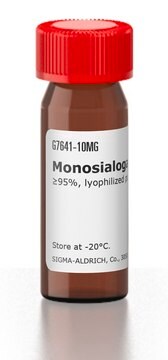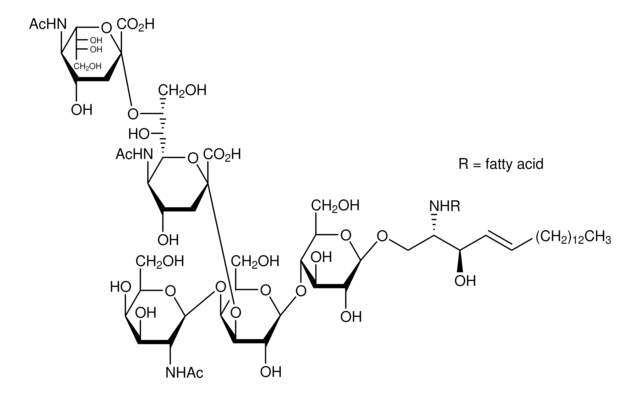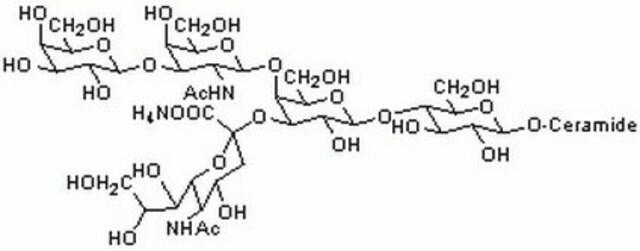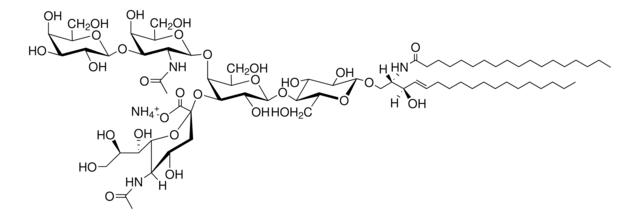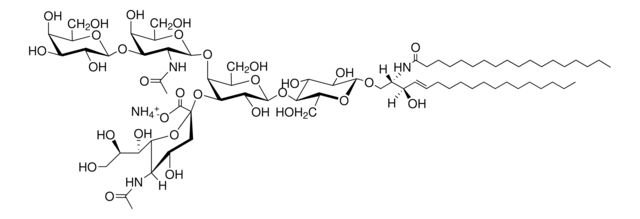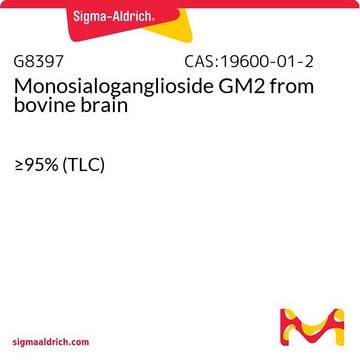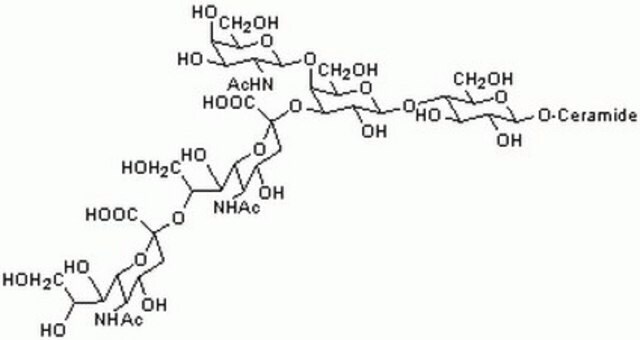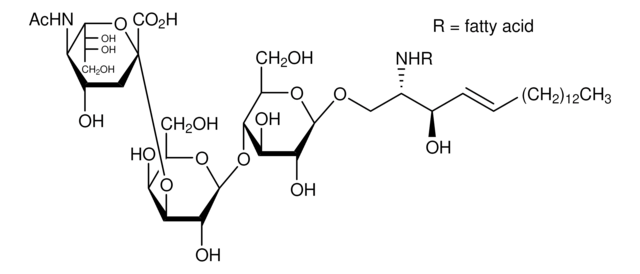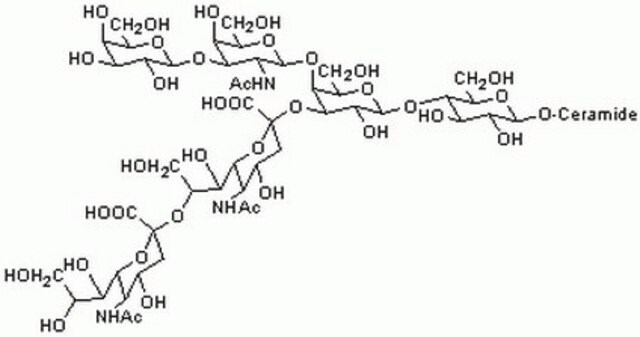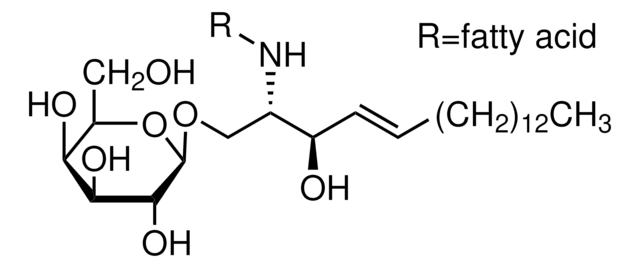G2392
Disialoganglioside GD1a from bovine brain
≥95% (TLC), lyophilized powder
Synonyme(s) :
Ganglioside GD1a, disialo from bovine brain
About This Item
Produits recommandés
Niveau de qualité
Essai
≥95% (TLC)
Forme
lyophilized powder
Solubilité
DMSO: soluble
Température de stockage
−20°C
InChI
1S/C86H152N4O39.2Na/c1-6-8-10-12-14-16-18-20-22-24-26-28-30-32-34-36-51(100)50(90-60(105)37-35-33-31-29-27-25-23-21-19-17-15-13-11-9-7-2)46-118-80-69(111)67(109)72(57(43-94)120-80)123-82-71(113)78(129-86(84(116)117)39-53(102)62(88-48(4)98)77(128-86)65(107)55(104)41-92)74(59(45-96)122-82)124-79-63(89-49(5)99)75(66(108)56(42-93)119-79)125-81-70(112)68(110)73(58(44-95)121-81)126-85(83(114)115)38-52(101)61(87-47(3)97)76(127-85)64(106)54(103)40-91;;/h34,36,50-59,61-82,91-96,100-104,106-113H,6-33,35,37-46H2,1-5H3,(H,87,97)(H,88,98)(H,89,99)(H,90,105)(H,114,115)(H,116,117);;/q;2*+1/p-2/b36-34+;;/t50-,51+,52?,53?,54-,55-,56?,57?,58?,59?,61+,62+,63?,64-,65-,66?,67?,68?,69?,70?,71?,72?,73?,74?,75?,76?,77?,78?,79?,80?,81?,82?,85?,86?;;/m0../s1
Clé InChI
CWLDKTAXQZEVQN-CUEXFKMESA-L
Vous recherchez des produits similaires ? Visite Guide de comparaison des produits
Amino Acid Sequence
Description générale
Application
- as a receptor for the detection of murine norovirus-1 (MNV-1) by RT-PCR
- as a glycolipid to study the interaction between protein human endogenous retrovirus W family pHERV-W ENV and glycolipids by enzyme-linked immunosorbent assay (ELISA)
- as a reference standard to analyze the ganglioside signatures of prostate cancer cells by high-performance liquid chromatography
Actions biochimiques/physiologiques
Code de la classe de stockage
11 - Combustible Solids
Classe de danger pour l'eau (WGK)
WGK 3
Point d'éclair (°F)
Not applicable
Point d'éclair (°C)
Not applicable
Faites votre choix parmi les versions les plus récentes :
Déjà en possession de ce produit ?
Retrouvez la documentation relative aux produits que vous avez récemment achetés dans la Bibliothèque de documents.
Les clients ont également consulté
Notre équipe de scientifiques dispose d'une expérience dans tous les secteurs de la recherche, notamment en sciences de la vie, science des matériaux, synthèse chimique, chromatographie, analyse et dans de nombreux autres domaines..
Contacter notre Service technique